At Alpha Omega Martial Arts we have a variety of programs to offer. With classes for children as young as 3 years old to programs for our more seasoned citizens, we have something to offer you and at a commitment level you can work with. Students can train as little as once per week to as much as they wish. For greater details read on or call us at (402)277-8568.
Go Ninja FX
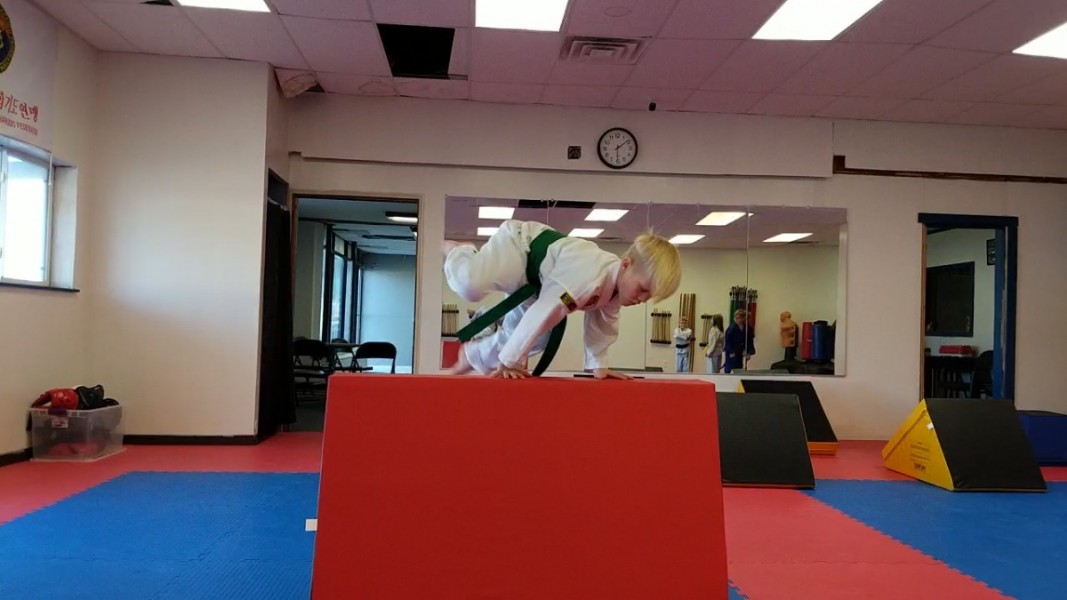 Go Ninja FX is part of the newest sport discipline that encompasses Martial Arts, Gymnastics, and Free Style Running Skills. Our program was developed by lifelong martial artists, gymnastic coaches, and free style running enthusiasts, to create a totally new, completely engaging, awesomely crazy fun sport. Your child could just be the next Ninja Warrior! In each class our Ninjas will go through a variety of segments including instruction and practice in:
Go Ninja FX is part of the newest sport discipline that encompasses Martial Arts, Gymnastics, and Free Style Running Skills. Our program was developed by lifelong martial artists, gymnastic coaches, and free style running enthusiasts, to create a totally new, completely engaging, awesomely crazy fun sport. Your child could just be the next Ninja Warrior! In each class our Ninjas will go through a variety of segments including instruction and practice in:
Martial Arts
Our Ninjas will begin their path with foundational martial arts skills taught in a fun, safe, and challenging environment. The martial arts skills will lay the foundation for a well-developed Ninja, while building confidence to take on the next Ninja Challenge.
Gymnastics
Every Ninja needs gymnastics skills! Our Ninjas will progress the a variety of Ninja levels while learning tumbling skills to improve kinesthetic body awareness, physical strength, overall fitness, balance, agility, and coordination skills. Ninjas will progress through these skills while gaining confidence and having a blast!
Free Style Running
Free Style Running is a sport of moving fast and agilely through an area while negotiating obstacles by running, jumping, and climbing. Our Ninjas will learn techniques to navigate through obstacle courses designed to keep them challenged, smiling, and wanting to step up to their next Ninja Level.
Taekwondo
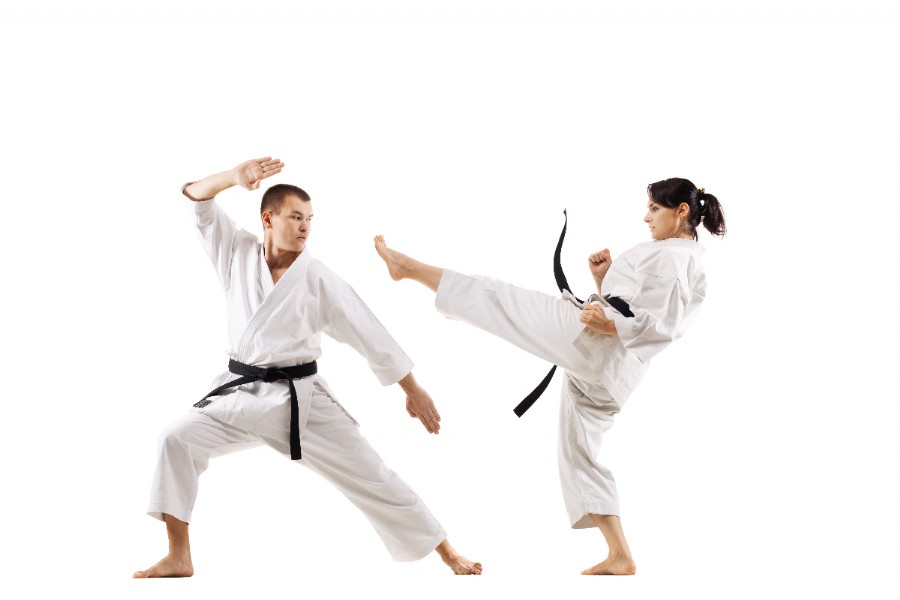 Taekwondo is a Korean form of martial arts characterized by punching and kicking techniques, with emphasis on high kicks, spinning jump kicks, and fast kicking techniques. The literal translation for Taekwondo is "The way of Hand and Foot” It is a kind of martial arts in which one attacks or defends with hands and feet anytime or anywhere, with occasional use of weapons. The physical training undertaken in Taekwondo is purposeful and fosters strength of mind through mental armament.
Taekwondo is a Korean form of martial arts characterized by punching and kicking techniques, with emphasis on high kicks, spinning jump kicks, and fast kicking techniques. The literal translation for Taekwondo is "The way of Hand and Foot” It is a kind of martial arts in which one attacks or defends with hands and feet anytime or anywhere, with occasional use of weapons. The physical training undertaken in Taekwondo is purposeful and fosters strength of mind through mental armament.
It is a combat sport and was developed during the 1940s and 1950s by Korean martial artists with experience in Japanese martial arts such as karate, Chinese martial arts, and indigenous Korean martial arts traditions. The oldest governing body for Taekwondo is the Korea Taekwondo Association, formed in 1959 through a collaborative effort by representatives from the nine original Kwans, or martial arts schools, in Korea. The main international organizational bodies for Taekwondo today are the International Taekwon-Do Federation (ITF), founded by Choi Hong-hi in 1966, and the partnership of the Kukkiwon and World Taekwondo (WT, formerly World Taekwondo Federation), founded in 1972 and 1973 respectively by the Korea Taekwondo Association.
Alpha Omega Martial Arts is a member of the Koryu Kwan founded by Master Daniel McCarthy which focuses on older Taekwondo Traditions combined with modern physical training methods.
Combat Hapkido
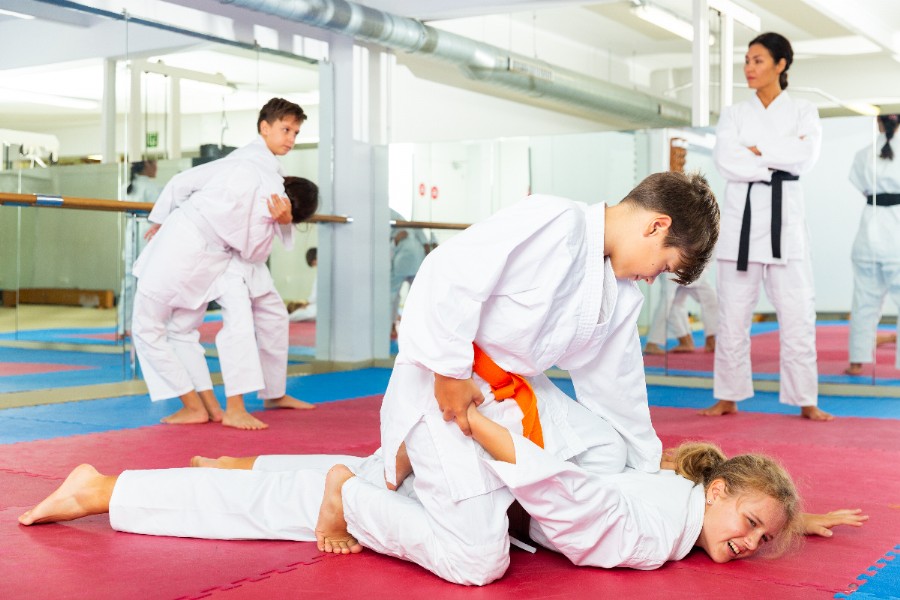 Combat Hapkido (known in Korean as Chon-Tu Kwan Hapkido) is an eclectic modern Hapkido system founded by John Pellegrini in 1990. The founder of Combat Hapkido was very clear in his statement that he did not invent a new martial art. He stated "I have merely structured a new Self-Defense system based upon sound scientific principles and modern concepts. For this reason Combat Hapkido is also referred to as the "Science of Self-Defense." Combat Hapkido is a new interpretation and application of a selected body of Hapkido techniques. The word "Combat" was added to Combat Hapkido to distinguish this system from Traditional Hapkido styles and to identify its focus as Self-Defense.
Combat Hapkido (known in Korean as Chon-Tu Kwan Hapkido) is an eclectic modern Hapkido system founded by John Pellegrini in 1990. The founder of Combat Hapkido was very clear in his statement that he did not invent a new martial art. He stated "I have merely structured a new Self-Defense system based upon sound scientific principles and modern concepts. For this reason Combat Hapkido is also referred to as the "Science of Self-Defense." Combat Hapkido is a new interpretation and application of a selected body of Hapkido techniques. The word "Combat" was added to Combat Hapkido to distinguish this system from Traditional Hapkido styles and to identify its focus as Self-Defense.
The style employs joint locks, pressure points, throws, hand strikes, and low-lying kicks, and trains practitioners to either counter or preemptively strike an imminent attack to defend one's self. In common with many Hapkido styles, it also emphasizes small circular motion, non-resisting movements, and control of an opponent through force redirection and varied movement and practitioners seek to gain advantage through footwork, distractive striking and body positioning to employ leverage.
Mukido
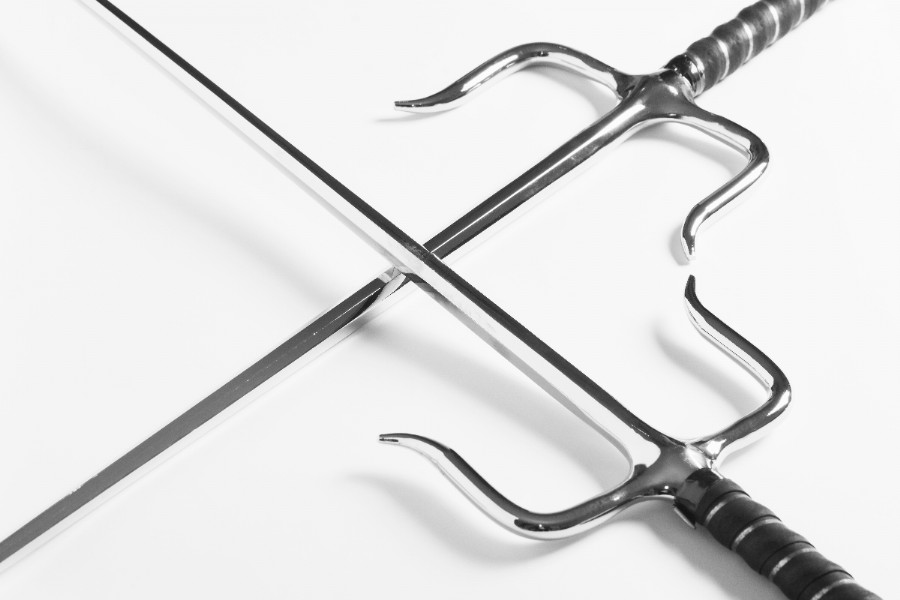 Traditionally martial arts weapons were taught hand in hand with empty hand techniques. After World War II many martial arts had to separate the martial weapons practice from the empty hand practice so that the occupational forces would allow their practice on the islands. At Alpha Omega Martial Arts we bring to the students an opportunity for the study of the variety of martial arts weapons practiced by many systems. We teach the Bo, Sai, Tonfa, , Nunchaku, and Kama, Kuwa(hoe), Eku(oar), and Nunti(gaff), single and double batons, knife, and sword. We also teach the practical aspects of weapon retention and disarming in regards to firearms as well.
Traditionally martial arts weapons were taught hand in hand with empty hand techniques. After World War II many martial arts had to separate the martial weapons practice from the empty hand practice so that the occupational forces would allow their practice on the islands. At Alpha Omega Martial Arts we bring to the students an opportunity for the study of the variety of martial arts weapons practiced by many systems. We teach the Bo, Sai, Tonfa, , Nunchaku, and Kama, Kuwa(hoe), Eku(oar), and Nunti(gaff), single and double batons, knife, and sword. We also teach the practical aspects of weapon retention and disarming in regards to firearms as well.
Tai Chi
Tai chi is an ancient tradition that, today, is practiced as a graceful form of exercise. It involves a series of movements performed in a slow, focused manner and accompanied by deep breathing.
Tai chi, also called tai chi chuan, is a noncompetitive, self-paced system of gentle physical exercise and stretching. Each posture flows into the next without pause, ensuring that your body is in constant motion.
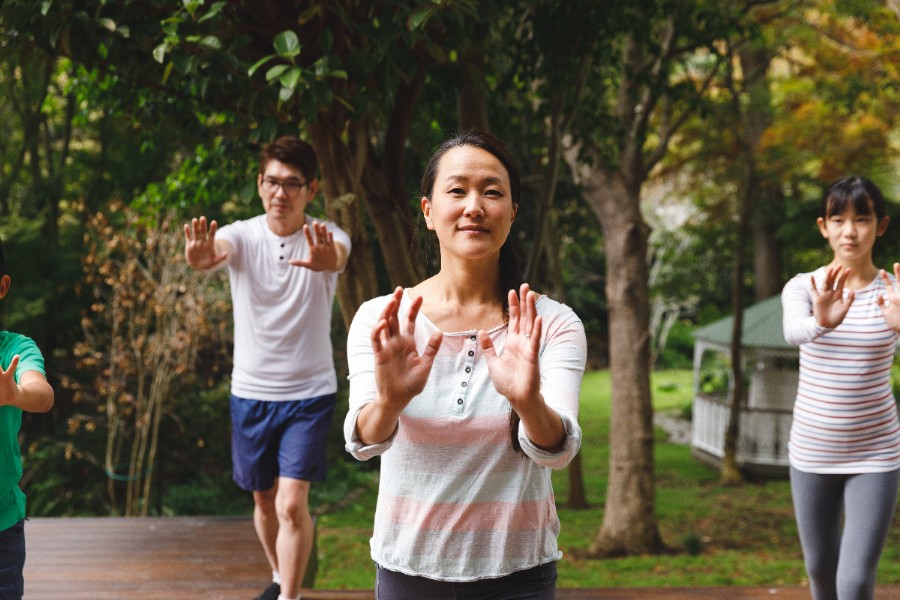 Tai chi has many different styles. Each style may subtly emphasize various tai chi principles and methods. There are variations within each style. Some styles may focus on health maintenance, while others focus on the martial arts aspect of tai chi.
Tai chi has many different styles. Each style may subtly emphasize various tai chi principles and methods. There are variations within each style. Some styles may focus on health maintenance, while others focus on the martial arts aspect of tai chi.
Tai chi is different from yoga, another type of meditative movement. Yoga includes various physical postures and breathing techniques, along with meditation.
Meditation and Ki Training
At Alpha Omega Martial Arts, developing the whole person is central in our teachings. Meditation and ki training are part of many classes, and we offer special seminars throughout the year for both novices and experienced meditators.
Breath is central to life and also Hapkido form and technique. Being aware of our breathing means that we can stabilize our emotions and bodies, while increasing both power and speed. When we are focused on breathing our minds are empty and in the moment, ready to respond.
SIM HO HUP BUP (Breathing) and (Meditation) MYEONGSANG
The breath is what continues and prolongs life. When we breathe deeply and often, we develop better health, a stronger immune system, a calmer nervous system, balanced emotions, clearer perceptions and understandings, better focus and more power for life. When our breath is shallow, we experience weakness of the body, a weak immune system, poor health, an easily agitated nervous system, unbalanced emotions, flawed perceptions, misunderstandings, poor focus and less power for life. When we don't breathe, we die. Throughout nature, all life forms that have short, quick, shallow breaths have a short, quick, shallow life. All life forms that have long, slow and deep breaths have a longer, slower and deeper life.
The breath grounds body, mind, spirit and soul. The breath also can alter, transform and heal the body, mind, spirit and soul. The breath can make the body impervious to decay and resistant to attacks from viruses, lethal blows of the martial arts, and to many weapons such as clubs, stones, chains, knives and even fire. The breath can change a person's mental and or physical state in an instant. People's emotions (energy in motion) are affected by the way they breathe, so they can control their emotions by controlling their breath. Every emotional state has a specific breathing pattern to match it. When you are angry, afraid, happy, sad or feeling loved, check your breathing, and then begin to alter your state at will by controlling your breath.
Our Energy Systems
While thousands of meridians run through our bodies, our 7 main chakras primarily condition our experience of ourselves and our world. They are energy centers where our two side channels knot around our central channel. The goal of yoga and internal martial arts is to open the knots so our energy eventually only flows in the central channel. When this happens, we are pure wisdom and bliss - all of our misconceptions stop.
The central channel is unity and wholeness: no division between "me" and all else. It is pure love and bliss, no misconceptions, no mistakes, no negative thoughts or actions. The side channels are separation: the misconception of "I am separate from all else" and negative emotions and thoughts. Wrongly perceived objects create negative actions and thoughts and perpetuate negative cycles (I react with anger, so I increase anger energy, and then see more things to be angry at, then react with anger, completing the ongoing cycle).
HAPKIDO PHILOSOPHY
Master Won Hyo taught that everyone has an original mind (self). Some are able to find it but most don’t. Most of us are not conscious of the false self (mind) that gets in the way of seeing our true self (nature).
One example Master Won Hyo would use is “The sun shines everyday but sometimes we don’t see it because of clouds that get in the way.” Everyone agrees that although we might not be able to see the sun, it is known to still be there. In the same thought, we have our original self/mind (sun) but are unable to see it because of our false self/mind (clouds). The clouds of awareness and consciousness keep most of us half awake.
Master Won Hyo also said, “The mind is like the sea. Although the sea is always moving, its true nature remains unchanged.” Master Won Hyo defined the waves as our illusionary and discriminating mind and the sea as our true self or original mind.
Master Won Hyo, 617-686, a teacher of the Hwa Rang, a specialist in master sword fighting.
Maintenance Training Program
The Maintenance Training Program allows a student to attend 4 classes per month. This averages to 1 class per week. This is a program that is excellent for our very young group (the 3-6 year olds) and those that need to take a break because of other commitments (for example they want to try baseball)
Basic Training Program
The Basic Training Program allows a student to attend 8 classes per month, this averages to approximately 2 classes per week. This is what most beginner students choose to do.
Elite Training Program
The Elite Training Program allows students to train 12 Regular classes per month and 4 Advance Training Topic Classes per month. This averages 3 regular classes per week. This program allows students to Mix and match some classes as well. A student could choose to attend 1 Weapons Class a week and 2 Taekwondo Classes per week.
Master Training Program
The Master Training Program allows students to train 16 Regular classes per month and any Advance Training Topic Classes offered. This averages 4 regular classes per week. This program also allows students mix their training classes in ways that they desire.
Ultimate Training Program
This allows students to train in an unlimited manner with no restrictions.